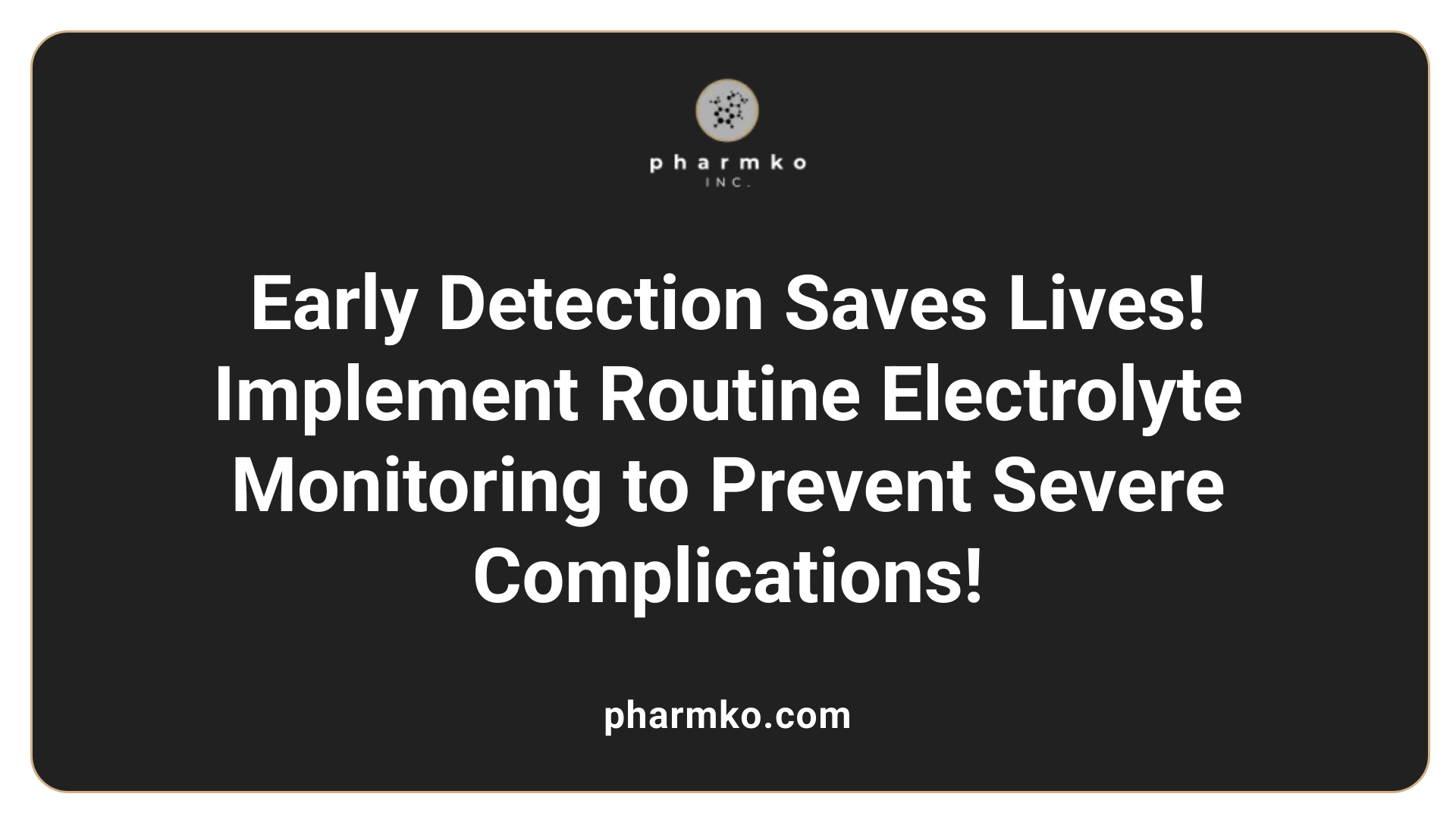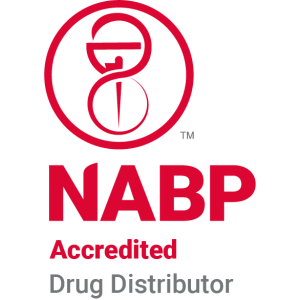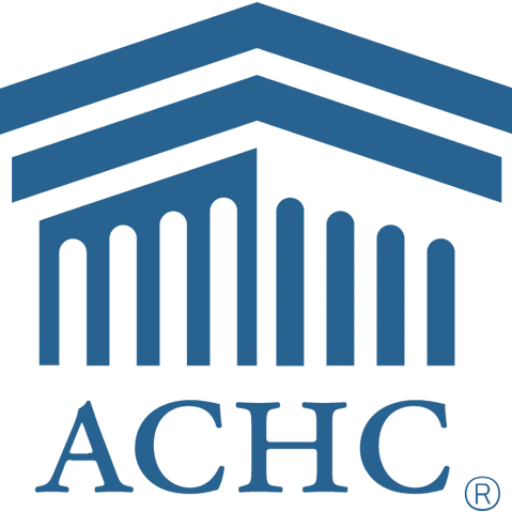How to Monitor TPN for Electrolyte Imbalances and Corrective Measures
Introduction to TPN and Electrolyte Monitoring
Total Parenteral Nutrition (TPN) is a life-saving therapy for patients with impaired gastrointestinal function, providing essential nutrients intravenously. As beneficial as TPN can be, it carries the risk of electrolyte imbalances that can lead to severe complications. Effective monitoring and management of electrolyte levels during TPN administration is crucial for patient safety and therapy success. In this article, we explore key guidelines and best practices for monitoring TPN to prevent and address electrolyte disturbances.
Key Facts on Electrolyte Monitoring in TPN Patients
- Electrolyte Monitoring during TPN is critical for preventing severe complications such as refeeding syndrome.
- Common imbalances include hypokalemia , hypophosphatemia , hypomagnesemia , and hyponatremia , each with distinct symptoms.
- Daily monitoring of serum electrolytes is recommended initially for unstable patients before tapering to weekly or biweekly checks.
- To prevent refeeding syndrome , entail a slow introduction of nutritional support and regular electrolyte checks, especially in severely malnourished patients.
- Collaboration among a multidisciplinary team (physicians, dietitians, pharmacists) is essential for tailored TPN management and monitoring.
- Adjustment of electrolyte profiles should be done carefully , particularly for sodium and potassium, to avoid complications such as neurological issues.
- Monitoring frequency is determined by patient stability : daily for critically ill , weekly for stable, and monthly for long-term TPN patients.
- Biochemical monitoring should begin with daily checks for high-risk patients, tapering frequency as stability is achieved.
- Electrolyte imbalances should be addressed with immediate actions such as intravenous replacement and ongoing monitoring of symptoms and vital signs.
- Long-term TPN therapy should include routine biochemical assessments to manage risk factors and adjust TPN formulations accordingly.
1. CPHL Tips for Early Detection of Electrolyte Imbalances in TPN Patients

Importance of Early Detection
Monitoring patient's electrolyte levels during Total Parenteral Nutrition (TPN) is critical due to the risk of imbalances that can lead to severe complications. With TPN providing essential nutrients intravenously when the gastrointestinal (GI) tract is non-functional, the risk of developing electrolyte abnormalities becomes increasingly significant. Regular assessments are key to preventing issues such as refeeding syndrome, which can manifest as profound drops in potassium, magnesium, and phosphate levels, causing serious complications.
Additionally, early detection allows for timely intervention which can mitigate potential complications like cardiac irregularities and neuromuscular dysfunction, leading to better patient outcomes and reduced healthcare costs.
Common Imbalances During TPN
While on TPN, several notable electrolyte imbalances may arise:
- Hypokalemia (Low Potassium): Fatigue, muscle cramps, and arrhythmias can occur due to low levels of potassium.
- Hypophosphatemia (Low Phosphate): This can lead to muscle weakness and impaired respiratory function.
- Hypomagnesemia (Low Magnesium): Symptoms may include tremors, muscle spasms, and cardiac arrhythmias.
- Hyponatremia (Low Sodium): Can cause confusion and lethargy.
Patients requiring TPN are often those who may already be severely malnourished or have underlying health conditions, increasing their vulnerability to these electrolyte shifts. Close monitoring protocols recommend checking serum electrolytes daily at first, tapering to weekly or biweekly checks as stability is achieved.
In summary, proactive and structured monitoring of electrolytes is essential in TPN management. This will ensure quick response to any imbalances that could compromise patient health.
2. CPHL Tips for Monitoring Protocols in TPN Administration

How do you monitor fluid and electrolyte imbalance in patients receiving TPN?
To monitor fluid and electrolyte imbalances in patients receiving Total Parenteral Nutrition (TPN), healthcare providers typically rely on a structured approach involving several key components. This includes conducting an electrolyte panel that measures levels of essential electrolytes such as sodium, potassium, chloride, bicarbonate, calcium, magnesium, and phosphate.
Abnormalities in these electrolyte levels can signal serious health issues that may require urgent intervention. Symptoms indicative of imbalances may include nausea, confusion, weakness, and irregular heartbeat, all of which mandate timely assessment and correction.
Regular blood tests, particularly a basic metabolic panel (BMP) or comprehensive metabolic panel (CMP), provide critical insights into the patient's overall fluid balance, kidney function, and metabolic state. Additionally, frequent checks of urine electrolyte levels can enhance the evaluation, offering a more complete view of the patient’s nutritional status.
Standard monitoring protocols
According to the American Society for Parenteral and Enteral Nutrition (ASPEN) guidelines, various monitoring protocols are recommended. These include:
- Urine Sugar Monitoring : Conducted every 8 hours to assess blood sugar levels.
- Electrolyte Assessments : Daily checks of serum electrolytes, including sodium, potassium, calcium, bicarbonate, as well as serum creatinine and liver function tests.
- Blood Glucose Monitoring : Every 6 hours until stable, with adjustments made to manage hyperglycemia.
Frequency of checks
The monitoring frequency for TPN patients varies significantly, depending on their clinical stability:
- Unstable Critically Ill Patients : Daily monitoring is essential.
- Stable Patients with No Changes : Monitoring every 2 to 7 days.
- Long-term TPN Patients : Assessment can range from every 1 to 4 weeks if clinically stable.
Furthermore, for pediatric patients or those presenting with acute illness, electrolytes should be monitored at least every 24 hours, ensuring that any imbalances are identified and corrected promptly.
This multi-faceted and tailored approach to monitoring is vital in reducing the risk of complications and optimizing health outcomes for patients on TPN.
3. CPHL Tips to Identify and Prevent Refeeding Syndrome

Risks of Refeeding Syndrome
Refeeding syndrome is a serious metabolic condition that can arise when nutritional support is reintroduced to patients, specifically those who are severely malnourished or have been NPO (nothing by mouth) for an extended period. This syndrome can lead to severe electrolyte imbalances, including drops in potassium, magnesium, and phosphate levels. Notably, these imbalances can exacerbate complications affecting multiple organ systems, ultimately impacting patient outcomes negatively.
Preventive Measures
To mitigate the risk of refeeding syndrome, careful monitoring and gradual nutritional reintroduction are vital. Here are essential preventive measures:
- Start Low, Go Slow : Initiate feeding at low doses to reduce rapid shifts in electrolytes.
- Regular Monitoring : Check serum electrolytes frequently—especially potassium, magnesium, and phosphate—until the patient stabilizes. For severely malnourished patients, daily checks are often necessary.
- Correct Existing Deficiencies : Address any electrolyte abnormalities prior to beginning nutritional support.
- Adjust Formulations : Tailor TPN formulations based on individual electrolyte needs and metabolic responses.
- Multidisciplinary Approach : Collaborate with a healthcare team that includes physicians, dietitians, and pharmacists to ensure comprehensive monitoring and adjustments based on emerging needs.
By implementing these strategies, healthcare providers can effectively manage TPN therapy and minimize the potential for refeeding syndrome, ensuring a safer recovery pathway for patients.
4. CPHL Tips for Managing Electrolyte Levels in Critically Ill Patients

Management in critically ill patients
Managing electrolyte levels in critically ill patients on Total Parenteral Nutrition (TPN) is crucial, given the significant risk of imbalances in sodium, potassium, magnesium, and calcium. Regular monitoring is essential as these patients often have underlying conditions that exacerbate electrolyte disturbances. Daily reviews of serum electrolytes are recommended during the initial phases of treatment until stabilization is confirmed. For patients with renal impairment or those in intensive care, additional focus on potassium and phosphorus levels is particularly important, as deficiencies can lead to severe complications.
Adjustment of electrolyte profiles
Adjusting electrolyte profiles in response to monitoring results is vital. For instance, sodium correction should be approached cautiously, aiming not to exceed more than 8-12 mEq/L daily to avoid neurological complications. Similarly, hypokalemia management should not only include potassium supplementation but also address concurrent magnesium deficiencies, as they can impede overall treatment effectiveness. In cases of hyperkalemia, an integrative approach using therapies such as beta-agonists and insulin may be warranted to facilitate potassium shifts intracellularly.
Effective Monitoring Strategies
The integration of an interdisciplinary team—consisting of a physician, dietitian, pharmacist, and nurse—is essential for successful management. Continuous assessment of trends, clinical symptoms, and the prompt correction of biochemical test results are necessary components of this process.
| Electrolyte | Common Abnormalities | Recommended Actions |
|---|---|---|
| Sodium | Hyponatremia, Hypernatremia | Adjust correction rates to avoid complications; monitor neurological function |
| Potassium | Hypokalemia, Hyperkalemia | Supplement, monitor magnesium levels; use insulin for hyperkalemia |
| Magnesium | Hypomagnesemia | Administer initial parenteral doses; monitor closely post-replacement |
| Calcium | Hypocalcemia | Supplement as needed based on trends; check vitamin D status |
Close monitoring of electrolytes should be part of routine care for critically ill patients on TPN, reducing risks associated with metabolic abnormalities and enhancing patient outcomes.
5. CPHL Tips for Customizing TPN Electrolyte Formulations
Customize Formulations
When tailoring Total Parenteral Nutrition (TPN) electrolyte formulations, healthcare professionals should consider several important factors that affect the patient's individual needs. This process is essential for avoiding imbalances, which can lead to complications such as refeeding syndrome and metabolic abnormalities. Below are strategies for effectively customizing TPN electrolyte formulations:
- Assess Laboratory Values : Regularly monitor serum electrolytes such as sodium, potassium, magnesium, calcium, and phosphate. Adjust the TPN infusion based on these values, addressing any deficiencies or excesses detected.
- Consider Clinical Conditions : Review the patient’s existing medical conditions. For instance, renal impairment may necessitate modifications in potassium and magnesium levels.
- Monitor Daily Trends : Especially in the initial stages, frequent checks (ideally every 6 hours) will help to quickly identify trends in electrolyte levels and allow prompt intervention.
Patient-Specific Needs
Individual patient needs must be paramount when customizing TPN formulations. Here are considerations to keep in mind:
- Malnutrition Status : Patients who are severely malnourished may experience more pronounced shifts in electrolytes when feeding resumes, so it's critical to introduce TPN gradually.
- Fluid Balance Assessment : Keep track of daily fluid intake and output to help guide the electrolyte requirements. This is especially vital in critically ill patients who may have restricted fluid intake or increased losses due to fever or GI suction.
- Multidisciplinary Approach : Collaborate with dietitians, pharmacists, and physicians to gather a broad range of insights that can inform electrolyte management strategies.
| Electrolyte | Common Imbalances | Monitoring Frequency |
|---|---|---|
| Sodium | Hyponatremia/Hypernatremia | Every 1-4 weeks, or more frequently if unstable |
| Potassium | Hypokalemia/Hyperkalemia | Daily, especially in renal impairment |
| Magnesium | Hypomagnesemia | Daily upon initiation |
| Phosphate | Hypophosphatemia | Daily, particularly in malnourished patients |
By maintaining vigilance and adapting TPN formulations to individual needs, healthcare professionals can mitigate the risks of electrolyte imbalances and enhance patient outcomes during parenteral nutrition therapy.
6. CPHL Tips for Multidisciplinary Approach in TPN Management

Role of multidisciplinary teams
The administration of Total Parenteral Nutrition (TPN) demands a coordinated effort among various healthcare professionals. A multidisciplinary team typically includes physicians, dietitians, pharmacists, and nurses, all collaborating to tailor the TPN regimen to the patient’s individual needs. This teamwork is essential for monitoring vital parameters, including electrolytes and metabolic status, to preemptively address complications like refeeding syndrome.
Regular collaboration allows for the sharing of expertise across disciplines, improving patient assessments and ensuring timely adjustments to TPN formulations. For instance, pharmacists can assist in optimizing nutrient compositions, while dietitians can evaluate caloric and micronutrient needs.
Improving patient outcomes
Effective monitoring and management of TPN can significantly enhance patient outcomes through early detection and intervention of electrolyte imbalances. Continuous monitoring of serum electrolytes and clinical symptoms, such as muscle cramps or confusion, can alert the team to potential abnormalities. Addressing these imbalances promptly helps maintain optimal metabolic function and reduces the risk of serious complications.
The integration of various professionals also supports patient education and emotional well-being. When patients understand their nutritional therapy and the rationale behind it, their compliance improves, fostering a partnership in care.
To summarize, a multidisciplinary approach to TPN management not only enhances clinical outcomes but also builds a robust support network for patients. Regular input from diverse specialists can lead to timely interventions and ultimately improve the quality of care delivered.
7. CPHL Tips on Corrective Measures for Identified Electrolyte Imbalances
Immediate Actions for Imbalances
When electrolyte imbalances are detected in patients on Total Parenteral Nutrition (TPN), prompt actions must be taken. Here are some immediate measures:
- Electrolyte Replacement: Depending on the specific deficiency, healthcare providers should initiate intravenous replacement therapies for crucial electrolytes such as potassium, magnesium, or phosphorus.
- Monitor Vital Signs: Close monitoring of vital signs is essential. Changes in blood pressure, heart rate, and respiratory rate can indicate severe imbalances that need immediate attention.
- Check Blood Glucose: Regular checks of glucose levels every 6 hours until stabilized are crucial to manage potential hyperglycemia, directly affecting sodium and potassium levels.
- Assess Symptoms: Look for signs such as muscle cramps, confusion, or lethargy that signify worsening imbalances.
Long-Term Corrections
For sustainable electrolyte balance during TPN, long-term strategies are beneficial:
- Tailored TPN Formulations: Ensure that TPN prescriptions are tailored to the patient's specific needs, taking into account their clinical condition and existing imbalances. Regularly adjust formulations based on ongoing biochemistry results.
- Nutritional Assessment: Conduct thorough regular evaluations of dietary intake, including vitamins and trace minerals, to prevent deficiencies or toxicities, especially in prolonged TPN use.
- Multi-disciplinary Review: Involve an interdisciplinary team of physicians, dietitians, and nurses to monitor and adjust electrolyte levels continually.
- Patient Education: Educate patients, where possible, about the importance of recognizing symptoms related to imbalances, thus engaging them in their care process.
Monitoring Recommendations
Monitoring should be rigidly structured, especially for those with existing imbalances:
| Parameter | Frequency | Notes |
|---|---|---|
| Serum Electrolytes | Every 6 hours (initial) | Adjust according to trends |
| Liver Function Tests | Twice weekly (initial) | Monitor for cholestasis |
| Blood Glucose | Every 6 hours until stable | Prevent risk of hyperglycemia |
| Fluid Intake/Output | Daily | Manage hydration status |
By implementing these corrective measures and maintaining stringent monitoring practices, healthcare providers can significantly reduce the risk of complications associated with electrolyte imbalances in patients on TPN.
8. CPHL Tips for Effective Biochemical Monitoring in TPN
Why is Biochemical Monitoring Important?
Biochemical monitoring during Total Parenteral Nutrition (TPN) is vital as it helps to identify and correct electrolyte imbalances that can lead to severe complications like refeeding syndrome, hypokalemia, and hypophosphatemia. Regular assessments of serum electrolytes—including sodium, potassium, magnesium, calcium, and phosphate—are essential.
Monitoring should begin with daily checks for unstable patients or those with high risks of electrolyte disturbances. As the patient stabilizes, the frequency can taper to weekly or bi-weekly evaluations based on their condition. This approach safeguards against complications that can arise from rapid shifts in electrolytes due to TPN.
How to Ensure Patient Safety?
To guarantee patient safety during the administration of TPN, an interdisciplinary team approach is crucial. This team typically includes physicians, dietitians, pharmacists, and nursing staff who collectively assess the patient’s needs. Here are some strategies to enhance monitoring:
- Frequent Electrolyte Checks: Conduct daily laboratory checks to monitor critical electrolytes initially, with adjustments made as needed.
- Blood Glucose Monitoring: Ensure blood glucose levels are checked every 6 hours during TPN administration to manage risks of hyperglycemia or hypoglycemia.
- Adjustments in PN Formulation: Tailor the composition of the TPN solution based on regular biochemistry checks, ensuring that any electrolyte deficiencies are corrected promptly.
- Assess Underlying Health Conditions: Monitor for concurrent conditions such as renal impairment that may necessitate specific adjustments in electrolyte administration.
Biochemical Monitoring Schedule**
| Monitoring Frequency | Patient Condition | Parameters to Monitor |
|---|---|---|
| Every 6 hours | Unstable or at high risk | Serum electrolytes, blood glucose |
| Daily | Critically ill | Serum electrolytes, liver function tests |
| Weekly | Stable | Serum electrolytes, liver function tests |
This schedule and protocol are essential to help mitigate the risks of complications while maximizing the benefits of TPN.
9. CPHL Tips for Addressing Nutrient Needs and Minimizing Risks in TPN Patients
Nutritional Assessment and Modification
Effective nutritional assessment is crucial in patients receiving Total Parenteral Nutrition (TPN). It involves thorough evaluations to tailor the nutrient formulation to the individual’s needs. Regular assessment helps in identifying unique requirements based on factors such as age, weight, activity level, and underlying medical conditions.
Clinicians should:
- Review metabolic status: Regularly check serum electrolyte levels, with a particular focus on sodium, potassium, magnesium, calcium, and phosphate.
- Adjust formulations: TPN solutions may need modification based on ongoing lab results, as deficiencies or excesses detected can prompt swift alterations.
- Monitor body weight and nutritional intake: Regular tracking helps ensure the patient is receiving adequate calories and nutrients, preventing malnutrition.
Minimizing Risks of TPN
To minimize the risks associated with TPN, particularly electrolyte imbalances and refeeding syndrome, the following strategies should be employed:
- Slow introduction of nutrients: Gradually increase the TPN dosage, particularly for those who are severely malnourished, to prevent rapid shifts in electrolytes.
- Frequent monitoring: Conduct daily checks for unstable critically ill patients and consistent assessments for stable patients, which might include laboratory tests every 1 to 4 weeks.
- Interdisciplinary approach: Engage a healthcare team including physicians, dietitians, and nurses to review electrolyte needs and adjust the nutrition plan accordingly.
| Strategy | Description | Importance |
|---|---|---|
| Nutritional assessment | Individualized nutrient intake evaluation | Prevent malnutrition |
| Slow nutrient introduction | Gradual increase in TPN dosage | Minimize refeeding syndrome risks |
| Regular monitoring | Daily checks for unstable patients; less frequent for stable patients | Detect imbalances early |
| Interdisciplinary approach | Team involvement in nutritional management | Comprehensive patient care |
Monitoring, assessment, and a collaborative plan are integral to optimizing TPN therapy and preventing complications.
10. CPHL Tips for Long-Term Monitoring Guidelines in TPN Therapy
What are the monitoring guidelines for electrolytes when administering TPN?
Monitoring guidelines for electrolytes during total parenteral nutrition (TPN) require a detailed and systematic approach. An interdisciplinary team including physicians, dietitians, pharmacists, and nurses plays a crucial role in ensuring effective monitoring and management of electrolyte levels.
Roadmap for monitoring electrolytes includes:
- Baseline Measurements: All patients should have their electrolyte levels assessed before initiating TPN, providing a critical starting point.
- Daily Monitoring for Unstable Patients: For critically ill or unstable patients, daily electrolyte checks are essential to detect shifts in their status promptly. This includes close observation of serum potassium, magnesium, and phosphate, which are commonly affected.
- Weekly or Biweekly Checks for Stable Patients: Patients who exhibit stability can shift to checks every 2-3 times per week, as their electrolyte levels are likely to fluctuate less frequently. This periodic review still ensures ongoing assessment of critical metabolic components.
Avoiding long-term complications
Long-term TPN therapy management also needs to focus on avoiding complications such as refeeding syndrome and electrolyte imbalances, which can lead to serious health issues:
- Regular Biochemical Assessments: Include routine checks for liver function and markers of infection, as liver dysfunction can occur with prolonged TPN usage. Abnormal results may necessitate more frequent monitoring.
- Individualized Adjustment of TPN Formulations: Tailoring the TPN formula based on the patient's needs is essential. The electrolyte makeup should reflect any deficiencies or excesses identified through monitoring.
- Close Observation of Clinical Symptoms: Regular checks should be complemented by clinical assessments to recognize symptoms of electrolyte disturbances (e.g., muscle cramps, confusion, lethargy). This observation aids in prompt adjustments to the TPN regimen.
By adhering to these guidelines, healthcare teams can effectively manage TPN therapy, enhance patient outcomes, and minimize the risks associated with electrolyte imbalances.
Conclusion
In the administration of Total Parenteral Nutrition (TPN), meticulous attention to monitoring and managing electrolytes is paramount. By adhering to established guidelines and adopting a multidisciplinary approach, healthcare professionals can significantly reduce the risk of complications, ensuring patient safety and optimal therapeutic outcomes. The insights and practices shared in this guide serve as a valuable resource for navigating the complexities of TPN therapy and maintaining electrolyte balance.
References
- Total Parenteral Nutrition - StatPearls - NCBI Bookshelf
- Complications and Monitoring – Guidelines on Parenteral Nutrition ...
- [PDF] The Hitchhiker's Guide to Parenteral Nutrition Management for Adult ...
- Monitoring and complications of parenteral nutrition - ScienceDirect
- Parenteral Nutrition (PN) - Nutritional Disorders - Merck Manuals
- Parenteral Nutrition Monitoring - BAPEN
- 6 Total Parenteral Nutrition (TPN Feeding) Nursing Care Plans
- [PDF] PROCEDURE
- Parenteral Nutrition - U.S. Pharmacist
- Section 3 - Complications of TPN - RxKinetics













